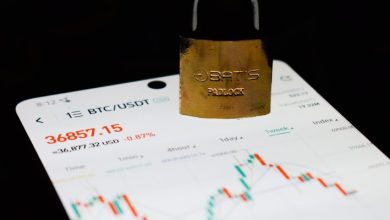Analyzing the Volatility of the Crypto Market

- Understanding the Factors Driving Cryptocurrency Price Fluctuations
- The Role of Market Sentiment in Crypto Price Volatility
- Analyzing the Impact of Regulatory News on Cryptocurrency Volatility
- Comparing Historical Data to Predict Future Price Swings in the Crypto Market
- Strategies for Managing Risk in a Highly Volatile Crypto Market
- Exploring the Psychological Effects of Volatility on Crypto Investors
Understanding the Factors Driving Cryptocurrency Price Fluctuations
Cryptocurrency price fluctuations are driven by a variety of factors that can impact the market in different ways. One of the main factors influencing the volatility of cryptocurrencies is market demand and supply. When there is high demand for a particular cryptocurrency, its price tends to increase. Conversely, when supply outweighs demand, the price may drop.
Another significant factor that affects cryptocurrency prices is market sentiment. Positive news such as regulatory approvals or partnerships can boost investor confidence and drive prices up. On the other hand, negative news like security breaches or regulatory crackdowns can lead to a sell-off and cause prices to plummet.
Moreover, technological developments and upgrades within a cryptocurrency’s network can also influence its price. Upgrades that enhance security, scalability, or speed can increase investor interest and drive up prices. Conversely, technical issues or vulnerabilities can lead to a decrease in price as investors lose confidence in the cryptocurrency.
Additionally, macroeconomic factors such as inflation, interest rates, and geopolitical events can impact cryptocurrency prices. Economic instability or uncertainty can lead investors to seek alternative assets like cryptocurrencies as a hedge against traditional markets, causing prices to rise.
Overall, understanding the various factors that drive cryptocurrency price fluctuations is essential for investors looking to navigate the volatile crypto market successfully. By staying informed and analyzing these factors, investors can make more informed decisions and mitigate risks associated with price volatility.
The Role of Market Sentiment in Crypto Price Volatility
Market sentiment plays a crucial role in driving volatility in the cryptocurrency market. The emotions and perceptions of investors and traders can heavily influence the prices of digital assets. Positive sentiment can lead to a surge in prices as more people buy in, while negative sentiment can trigger a sell-off, causing prices to drop.
Factors such as news, social media trends, and overall market conditions can all impact market sentiment. For example, positive news about a new technology upgrade or a partnership with a major company can boost investor confidence and drive up prices. On the other hand, negative news like regulatory crackdowns or security breaches can create fear and uncertainty, leading to a decrease in prices.
Understanding market sentiment is essential for analyzing and predicting price movements in the crypto market. Traders and analysts often use sentiment analysis tools to gauge the overall mood of the market and make informed decisions. By keeping a close eye on sentiment indicators, investors can better navigate the volatile nature of the cryptocurrency market.
Analyzing the Impact of Regulatory News on Cryptocurrency Volatility
When analyzing the impact of regulatory news on cryptocurrency volatility, it is crucial to consider the various factors that can influence the market. Regulatory news can have a significant effect on the price of cryptocurrencies, causing sudden fluctuations in value. This volatility can be attributed to the uncertainty and speculation that often surrounds regulatory announcements.
One key factor to consider is how different countries and regions approach cryptocurrency regulation. For example, news of a potential ban on cryptocurrency trading in a major market can cause prices to plummet, while a more favorable regulatory environment can lead to a surge in value. It is essential to monitor regulatory developments worldwide to anticipate how they may impact the crypto market.
Furthermore, the timing of regulatory news can also play a crucial role in determining its impact on cryptocurrency volatility. Market participants react quickly to breaking news, leading to rapid price movements. Traders and investors must stay up-to-date with the latest regulatory developments to make informed decisions and mitigate risk in a volatile market.
Comparing Historical Data to Predict Future Price Swings in the Crypto Market
When analyzing the volatility of the crypto market, it is essential to compare historical data to predict future price swings accurately. By looking at past trends and patterns, investors and traders can gain valuable insights into potential market movements.
One way to do this is by examining historical price charts and identifying recurring patterns or cycles. This can help in understanding how the market has behaved in the past under similar circumstances and what can be expected in the future.
Additionally, analyzing trading volumes and market sentiment from the past can provide clues about potential price swings. High trading volumes often indicate increased market activity and can lead to higher volatility, while extreme market sentiment can sometimes signal a trend reversal.
By combining technical analysis with historical data, investors can make more informed decisions when it comes to predicting future price swings in the crypto market. However, it is essential to remember that past performance is not always indicative of future results, and other factors can also influence price movements.
Strategies for Managing Risk in a Highly Volatile Crypto Market
When dealing with the highly volatile crypto market, it is essential to have strategies in place to manage the associated risks. Here are some tips to help you navigate this unpredictable landscape:
- Diversification: Spread your investments across different cryptocurrencies to minimize the impact of a single asset’s price fluctuations.
- Stop-loss orders: Set up stop-loss orders to automatically sell your assets if their value drops below a certain point, helping you limit potential losses.
- Stay informed: Keep up to date with the latest news and developments in the crypto market to make informed decisions about your investments.
- Use technical analysis: Utilize technical analysis tools to identify trends and patterns that can help you predict future price movements.
- Manage your emotions: Avoid making impulsive decisions based on fear or greed, as this can lead to poor investment choices.
By following these strategies, you can effectively manage the risks associated with the highly volatile crypto market and increase your chances of success as a crypto investor.
Exploring the Psychological Effects of Volatility on Crypto Investors
Investing in cryptocurrencies can be a rollercoaster ride due to the high volatility in the market. This constant fluctuation in prices can have a significant impact on the mental well-being of investors. Let’s explore the psychological effects of this volatility on crypto investors:
- Fear and Anxiety: The unpredictable nature of the crypto market can lead to feelings of fear and anxiety among investors. The fear of losing money or missing out on potential profits can be overwhelming.
- Stress: The constant monitoring of price movements and making decisions based on market trends can be stressful. This stress can take a toll on the mental health of investors.
- Excitement: On the flip side, the thrill of making profits from volatile price swings can be exhilarating. However, this excitement can quickly turn into disappointment if the market takes a turn for the worse.
- Impulsivity: Volatility in the crypto market can lead to impulsive decision-making. Investors may be more likely to buy or sell based on emotions rather than a rational investment strategy.
It is essential for investors to be aware of the psychological effects of volatility and to take steps to manage their emotions. This can include setting clear investment goals, diversifying their portfolio, and seeking support from financial professionals or mental health professionals if needed.



